The Norwegian Mountain Bike Experiment
How a daily cycle commute provided the basis for further developing the Arrowhead Framework
The Arrowhead Framework aims to facilitate interoperability so that cyber-physical systems combining the Internet of Things (IoT) and Systems of Systems (SoS) can communicate efficiently and so that new elements can be added to systems. One of the many industrial partners in the Arrowhead Tools project is Jotne EPM Technology a specialist in developing standards-based software for data exchange and sharing. Central to Jotne’s work is ISO 10303 – Standard for the Exchange of Product Model Data.
On joining the Arrowhead Tools project the team at Jotne were unaware of the potential and capacity of the software applications the form the Arrowhead Framework, how they could best fit the Norwegian use case and how compatible they were with ISO 10303. In order to gain as much insight as quickly as possible a seemingly simple case was developed. Vice President, Kjell Bengtsson, had three sensors fitted to the frame of the mountain bike that he used for his daily commute. The challenge was to integrate the sensor data into a series of frameworks and provide readily available, useful data that conformed to relevant ISO standards and could be accessed in a repository. This required integration with a mobile gateway and cloud storage solution from Tellu. The results, provided by Jotne and HIOF, provided a clearer understanding of the capacity and potential for using the Arrowhead Framework software in a new context as well as useful insights for further developments.
The next step was to integrate these findings into something concrete that would be directly beneficial in an industrial setting. The choice fell on a Palfinger crane, mounted on a ship, with potential uses in a range of offshore environments, such as in Norway’s oil and gas industry. Data from the experiments with the crane, provided by NTNU can be found here.
See a general presentation on the Norwegian Mountain Bike Experiment here.

